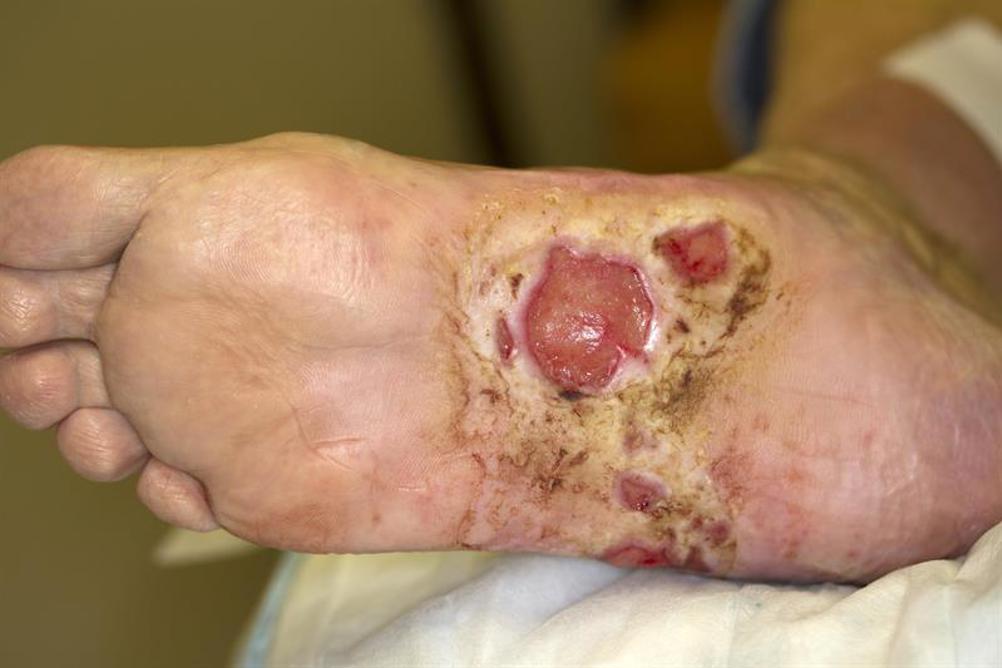
Why do foot problems occur in diabetes?
Peripheral neuropathy is a major factor predisposing the individual with diabetes to foot problems and represents the principal underlying cause of around 60% of diabetic foot ulcers.1 Motor, sensory and automomic nerves can all be affected.
Impairment of the motor nerve supply to the foot muscles can cause muscle atrophy and imbalance of toe flexors and extensors leading to foot deformity, such as claw foot and pes cavus. In the presence of a sensory neuropathy (which most commonly presents in a stocking distribution in the legs, although ultimately hands may be affected) the abnormally high pressure points on the foot arising from deformity are not perceived and there follows a build-up of callus over prominent weight-bearing areas. Under these circumstances necrosis of soft tissue under the callus can occur and the risk of foot ulceration is hugely increased.2
Register now for access
Thank you for visiting Independent Nurse and reading some of our premium content. To read more, please register today.
Register
Already have an account? Sign in here
